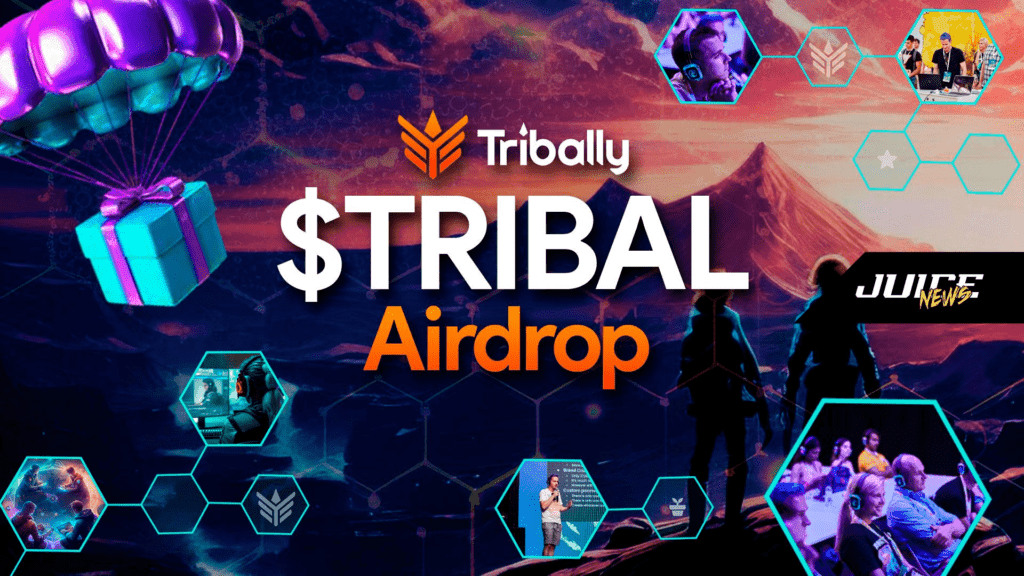

The Web3 gaming space has been buzzing recently, and it’s all thanks to Tribally’s groundbreaking Play-to-Airdrop (P2A) campaign. This innovative initiative has made waves in the gaming world, cementing itself as the most impactful growth event in Web3 gaming history. With the P2A model, Tribally has managed to seamlessly merge player engagement with digital asset rewards, forever changing the landscape of gaming and player ownership.
So, what exactly made Tribally’s P2A campaign such a massive success? Let’s jump into the details of how it reshaped Web3 gaming and what it means for players moving forward.
The Rise of Play-to-Airdrop (P2A)
Play-to-Earn (P2E) games have dominated the Web3 gaming space for a while, offering players the chance to earn tokens and assets through gameplay. However, Tribally’s Play-to-Airdrop (P2A) model takes things to the next level by flipping the script on traditional game rewards.
Instead of focusing solely on in-game currencies or assets earned over time, P2A rewards players with airdrops of valuable digital assets based on their achievements and participation. Essentially, the more you play and engage with the game, the more likely you are to receive unique NFTs and tokens directly airdropped into your wallet. These rewards have real-world value and can be traded or held as investments, adding another layer of excitement and opportunity for players.
Tribally’s campaign was structured around the idea of making every game session feel rewarding, whether you’re a casual player or a hardcore gamer. By turning achievements into real digital ownership, the P2A model captured the attention of the broader Web3 gaming community, catapulting the campaign into the spotlight.
The Impact on the Web3 Gaming Space
Tribally’s P2A campaign didn’t just make headlines for its innovation—it also saw an unprecedented level of engagement and player growth. Thousands of new players flocked to Tribally, drawn in by the allure of earning exclusive rewards through gameplay. The campaign became a catalyst for onboarding new users into the Web3 ecosystem, many of whom were previously unfamiliar with blockchain-based gaming.
But it wasn’t just the sheer number of players that made this campaign historic. The quality of rewards and ease of participation set a new standard for gaming events. Tribally ensured that the digital assets distributed through their airdrops held genuine value, with some rare NFTs and tokens gaining significant worth on secondary markets.
Moreover, the P2A system was designed with simplicity in mind. Players didn’t need to jump through hoops to participate—just play, enjoy the game, and watch as rewards landed in their wallets. This frictionless approach appealed to both newcomers and seasoned gamers, making Web3 gaming more accessible than ever before.
Why Tribally’s P2A Campaign Stood Out
Several factors contributed to the massive success of Tribally’s Play-to-Airdrop campaign:
- Player Ownership and Rewards
The biggest draw of the P2A campaign was undoubtedly the opportunity for true player ownership. Players could earn NFTs and tokens that weren’t just in-game assets but tangible, tradeable rewards. This transformed gameplay from a simple pastime into a rewarding investment, giving players more control over their digital assets. - Exclusive Airdrops
Tribally didn’t hold back when it came to the exclusivity of its airdrops. Players received rare NFTs, which quickly gained attention due to their scarcity and potential value in secondary markets. The chance to secure these limited-edition rewards fueled player engagement, driving more users to join the game. - Community Building
Web3 gaming thrives on community, and Tribally’s campaign was no different. The Play-to-Airdrop model fostered a sense of camaraderie among players, as they shared their progress, achievements, and excitement about upcoming airdrops. This strong community element created a loyal player base and helped Tribally sustain long-term growth. - Seamless Integration with Web3
Perhaps the most impressive part of Tribally’s campaign was how effortlessly it integrated Web3 technology into the gaming experience. Players didn’t need to be blockchain experts to enjoy the benefits of P2A. The user-friendly interface made participating in airdrops easy and intuitive, ensuring that even Web3 novices could get involved.
What’s Next for Tribally?
As the dust settles on the P2A campaign, the gaming world is left wondering—what’s next for Tribally? The success of this event has set the stage for future innovations, and Tribally is already planning more growth events and reward systems to keep the excitement alive.
In the coming months, we can expect more details about new gameplay features, tokenomics updates, and additional ways for players to earn rewards. Tribally’s commitment to improving player engagement and offering tangible benefits means that the game is poised for even greater success in the Web3 gaming space.
Conclusion: Tribally’s Game-Changing Event
Tribally’s Play-to-Airdrop campaign has redefined what’s possible in Web3 gaming. By allowing players to earn valuable digital assets simply by playing and participating, Tribally has successfully bridged the gap between gaming and real-world rewards. The campaign has left a lasting impact on the Web3 ecosystem, attracting a wave of new users and setting a new standard for how games can leverage blockchain technology.
As Tribally continues to evolve, we can expect more groundbreaking events and opportunities for players to own, trade, and invest in the digital assets they earn. If the P2A campaign was any indication, the future of Web3 gaming is bright—and Tribally is leading the charge.
FAQs
1. What is Play-to-Airdrop (P2A)?
Play-to-Airdrop (P2A) is a gaming model where players earn rewards, like NFTs or tokens, through gameplay, which are then airdropped into their wallets. Tribally’s P2A campaign allowed players to earn valuable digital assets simply by staying active in the game.
2. How does P2A differ from Play-to-Earn (P2E)?
While Play-to-Earn (P2E) allows players to earn in-game currencies or assets over time, Play-to-Airdrop (P2A) focuses on rewarding players with exclusive NFTs or tokens via airdrops based on their participation. P2A offers more valuable and tradeable rewards.
3. What’s next for Tribally after the P2A campaign?
The platform plans to build on the success of its P2A campaign with new gameplay features, additional reward systems, and tokenomics updates, all aimed at improving player engagement and offering more ways to earn digital assets.



